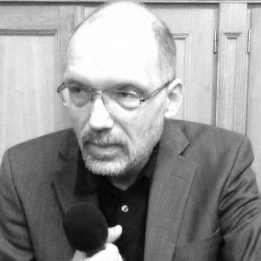The proportion of people in Poland identifying as Roman Catholics has fallen to 71% in the latest national census, down from 88% a decade earlier.
The figures mirror other findings from recent years showing declining attachment to Poland’s Catholic church, which has been hit by a series of scandals over child sex abuse by clergy and has faced criticism for its support of an unpopular near-total ban on abortion.
The new data, released by Statistics Poland (GUS), a state agency, show that in the 2021 census, 27.1 million people (71.3%) identified themselves as followers of the Roman Catholic church. That was down from 33.7 million (87.6%) at the last census a decade earlier.
Meanwhile, the proportion saying that they belonged to no faith almost tripled, from 2.4% in 2011 to 6.9% in 2021. Likewise, those who refused to answer the question also almost tripled, from 7.1% to 20.5%.

The highest proportions of Roman Catholics were found in the eastern provinces of Subcarpathia (82.9%), Świętokrzyskie (81.2%), and Lublin (80.7%). The lowest were in West Pomerania (64.5%), Lower Silesia (65.3%) and Pomerania (67.2%)
Apart from Roman Catholicism, all other religious denominations remained small in the 2021 census, with the Orthodox church the second largest (151,648 believers, 0.4% of the population), followed by Jehovah’s Witnesses (108,754, 0.3%) and Lutherans belonging to the Evangelical Church of the Augsburg Confession (65,407, 0.2%).
Among non-Christian denominations, none were larger than 0.1% of the population. The biggest, with 3,236 followers, was Diamond Way Buddhism.
Meanwhile, the number belonging to the Muslim Religious Union (2,209) was smaller than the number identifying as Pastafarians (2,312) – followers of the Church of the Flying Spaghetti Monster, a parody religion.
New census data show:
– English is now the most common language used at home after Polish
– The largest ethnic minorities, Silesians and Kashubs, have shrunk
– The number of Jews doubled
– Those with English or Irish as a secondary identity have quintupled https://t.co/W1H1ANTfR3— Notes from Poland 🇵🇱 (@notesfrompoland) April 13, 2023
Regular polling by state research agency CBOS shows that the proportion of Poles who declare themselves to be religious believers fell from 94% in 1992 to 87% in 2021. Over the same period, those regularly practising their religion dropped from 70% to 43%.
Among young Poles, the decline was even more dramatic: from 69% practising regularly in 1992 to 23% in 2021. Last year, the Catholic Primate of Poland, Archbishop Wojciech Polak, admitted that the decline in religious practice among young Poles was “devastating”.
The church’s own figures show that the proportion of Catholics in Poland attending mass fell from 37% in 2019 to 28% in 2021. While the pandemic played a part, the church admits that “socio-cultural factors” were also involved. It has also noted a growing number of people formally leaving the church through apostasy.
A growing number of Poles are turning away from the Catholic church, but not from religious belief itself.
This creates challenges for the church, but also for Polish identity, which has historically been linked to Catholicism, writes Katarzyna Skiba https://t.co/udWGzd0X7F
— Notes from Poland 🇵🇱 (@notesfrompoland) April 18, 2023

Notes from Poland is run by a small editorial team and published by an independent, non-profit foundation that is funded through donations from our readers. We cannot do what we do without your support.
Main image credit: Catholic Church England and Wales/Flickr (under CC BY-NC-ND 2.0)

Daniel Tilles is editor-in-chief of Notes from Poland. He has written on Polish affairs for a wide range of publications, including Foreign Policy, POLITICO Europe, EUobserver and Dziennik Gazeta Prawna.



















